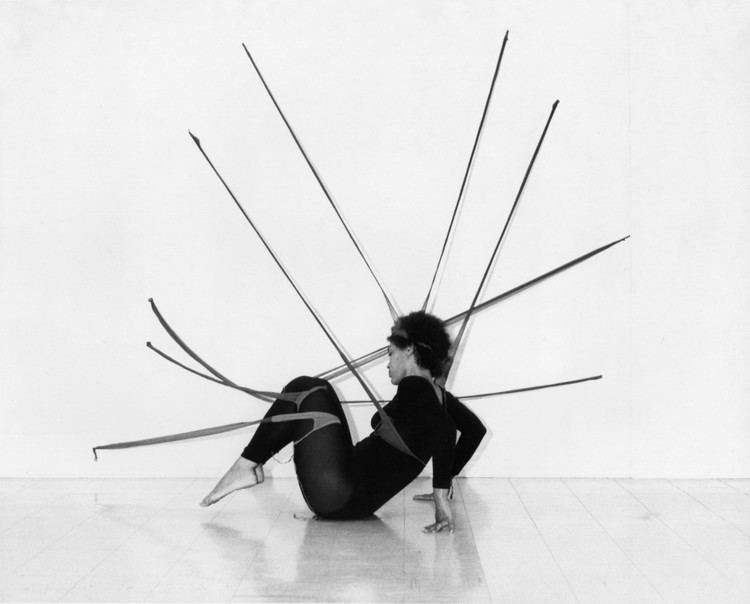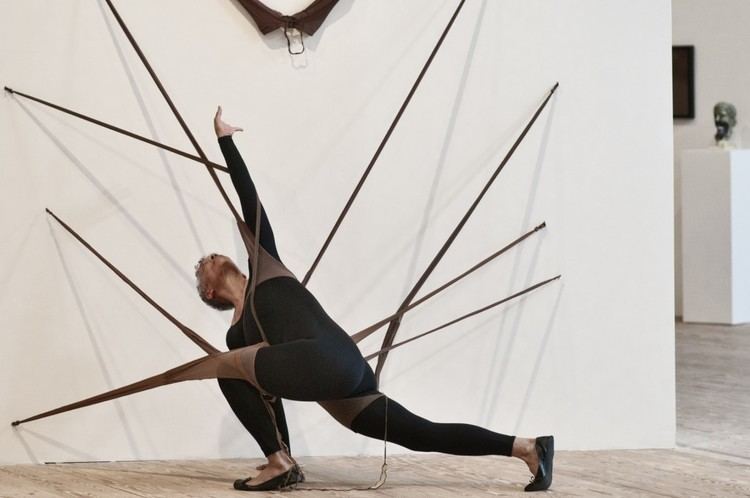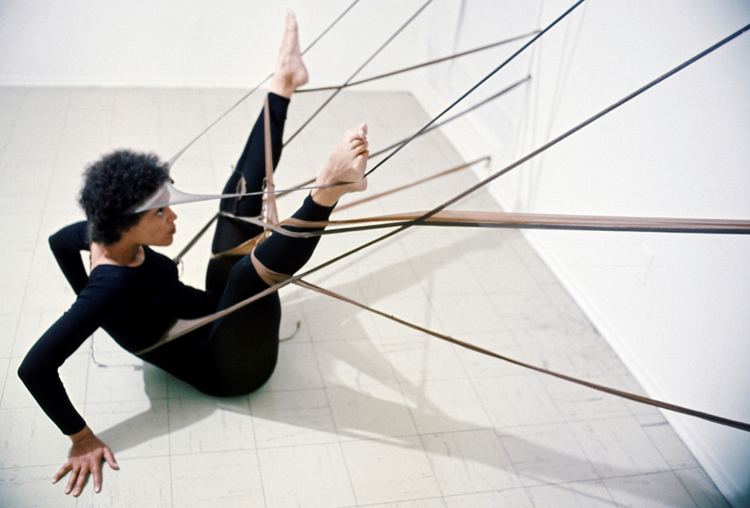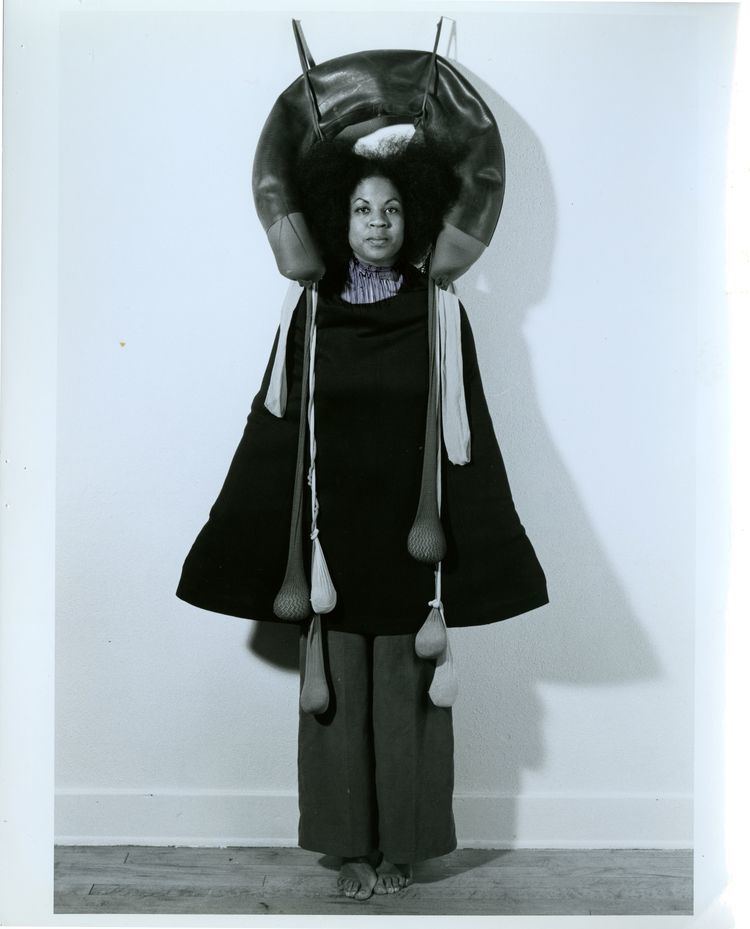Name Senga Nengudi | Role Visual artist | |
 | ||
Senga nengudi r s v p radical presence ybca
Senga Nengudi (born 1943) is an African-American visual artist best known for her abstract sculptures that combine found objects and choreographed performance.
Contents
- Senga nengudi r s v p radical presence ybca
- Senga nengudi and linda goode bryant tateshots
- Early life and education
- Work
- Themes
- References

Senga nengudi and linda goode bryant tateshots
Early life and education

Nengudi was born Sue Irons in Chicago in 1943, but grew up in Los Angeles and Pasadena. Her cousin Eileen Abdul-Rashid is also an artist. She studied art and dance in Los Angeles during the 1960s and earned her BA from California State University in 1968. She then spent a year studying at Waseda University, Tokyo. Afterwards, she returned to California State University, from which she received her MA in sculpture in 1971. She moved to New York City shortly thereafter to continue her career as an artist. She lives and works in Colorado Springs, Colorado.
Work

Nengudi was part of the radical, avant-garde black art scenes in both New York City and Los Angeles during the 1960s and 1970s. David Hammons and Maren Hassinger were frequent collaborators in her work.

In 1975, Nengudi began her "respondez s'il vous plait" (RSVP) series for which she is best known. Combining her interest in movement and sculpture, Nengudi created abstract sculptures of everyday objects through choreographed sets which were either performed in front of a live audience or captured on camera. The sculptures were made from everyday objects like pantyhose, and parts were filled with sand. The finished sculptures often evoked on the forms of sagging breasts and testicles. For her, the use of pantyhose as a material reflected the elasticity of the human body.
In 1978, Nengudi paired with Hassinger for a performance piece in which the two artists improvised movement while entangled inside a large web of pantyhose. The performance symbolized the ways in which women are restricted by societal gender norms. Nengudi also took many staged photographs during this period. She often appeared anonymously in them herself as a genderless figure, defying definition.
The same year, Nengudi and members of the Studio Z collective (including Hammons and Hassinger) performed Ceremony for Freeway Fets under a freeway overpass on Pico Boulevard in Los Angeles. Nengudi designed costumes and headdresses made of pantyhose for the performers. Hammons and Hassinger played the roles of male and female spirits, with Nengudi performing as a spirit to unite the genders. Both the dance performance and soundtrack, performed by members of Studio Z, were improvised.
In 2007, she created a video installation entitled "Warp Trance", and her residency at the Fabric Workshop and Museum in Philadelphia articulated the experiences of textile workers.
In March 2017, Nengudi participated at the Armory Show in New York City in the Focus Section. The booth was presented by Thomas Erben Gallery and Lévy Gorvy.
Nengudi will be participating in the 2017 Venice Biennale, Viva Arte Viva, May 13 - November 16, 2017.
Themes
Complicating cultural, ethnic and racial classification became as central to Nengudi's work as her handling of gender constraints. She often combines African, Asian and Native American art forms in particular for her performance pieces and staged photographs. While her oeuvre highlights issues surrounding gender, race and ethnicity, Nengudi's work focuses on the ways in which everyone is negatively affected by these systematic forces and her pieces attempt to foster cross-cultural inspiration for men and women alike.
